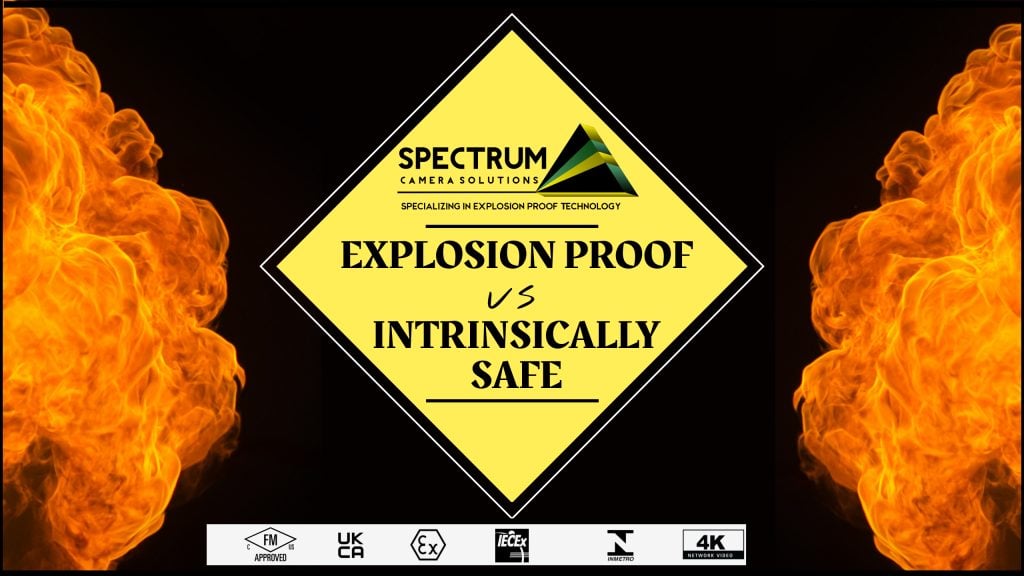“Explosion-proof” and “intrinsically safe” are terms used to describe equipment and systems designed to operate in potentially hazardous environments, particularly those where there is a risk of flammable gases, vapors, or dust. However, these terms refer to different concepts and have distinct meanings:
Explosion-Proof:
Definition: Explosion-proof equipment is designed to contain any explosion within its housing and prevent it from igniting the surrounding atmosphere. The idea is to contain and control any potential explosion, ensuring that it does not propagate beyond the equipment and cause harm.
Design Features: Explosion-proof devices are typically constructed with robust and durable enclosures that can withstand the pressure created during an internal explosion. The enclosures are designed with flamepaths that quench the flames of an explosion upon exiting pressures and prevent the flame from exiting.
Common Use Cases: Common applications include areas where the atmosphere may contain flammable gases or vapors. Examples include chemical plants, oil refineries, smart sewers, and locations with potentially explosive atmospheres
Intrinsically Safe:
Definition: Intrinsically safe (IS) equipment is designed to operate in environments where the electrical or thermal energy within the equipment is limited to a level that cannot ignite a hazardous atmosphere. Instead of preventing explosions like explosion-proof devices, intrinsically safe devices are built to eliminate the possibility of generating enough energy to cause ignition.
Design Features: IS devices achieve safety by limiting electrical and thermal energy to levels below the ignition point of the surrounding atmosphere. This is often achieved through energy-limiting components, barriers, or encapsulation techniques.
Common Use Cases: Intrinsically safe devices are commonly used in industries where there is a risk of explosive atmospheres, such as mining, petrochemical, and pharmaceutical industries. They are suitable for locations where preventing the possibility of ignition is crucial.
In summary, while both explosion-proof and intrinsically safe equipment aim to mitigate the risks associated with hazardous environments, they do so in different ways. Explosion-proof devices contain and control potential explosions, whereas intrinsically safe devices prevent the generation of sufficient energy to cause ignition in the first place.
About Spectrum Camera Solutions:
Spectrum Camera Solutions manufactures a full range of globally certified Explosion Proof cameras to monitor any hazardous area. Founded in 2012, Spectrum Camera Solutions has an unparalleled background as a world leader in hazardous-area vision systems featuring explosion-protected cameras. Our systems help monitor process areas, security, and safety, and our innovative Explosion Proof camera housings are made from durable materials and innovative engineering to ensure operational excellence in harsh environments. Our cameras are Made In Texas and we keep models in stock that are ready to ship.
Current manufacturers offered:
- Spectrum – Axis Explosion-Proof Camera
- Spectrum – Bosch Explosion-Proof Camera
- Spectrum – Avigilon Explosion-Proof Camera
- Spectrum – Motorola Explosion-Proof Camera
- Spectrum – Panasonic Explosion-Proof Camera
- Spectrum – Pelco Explosion-Proof Camera


